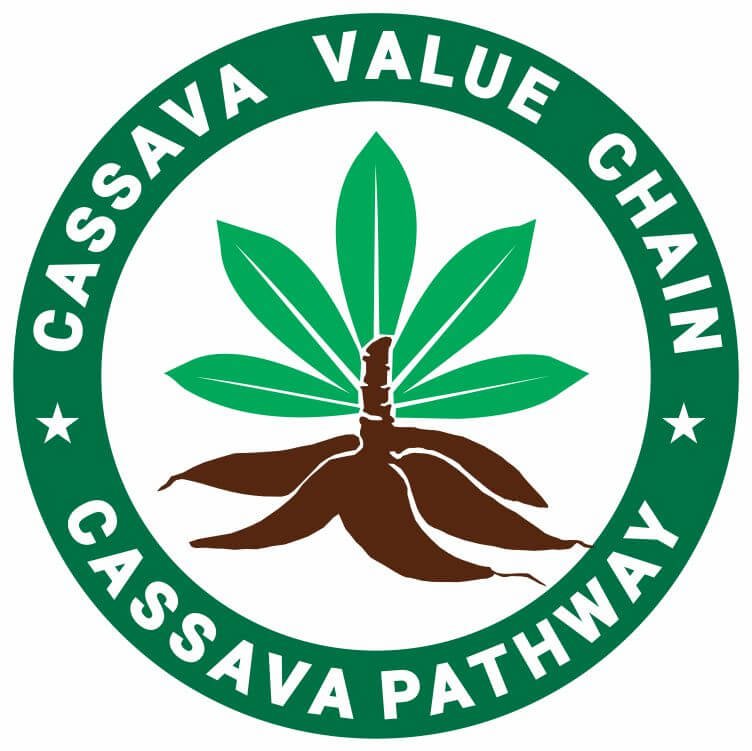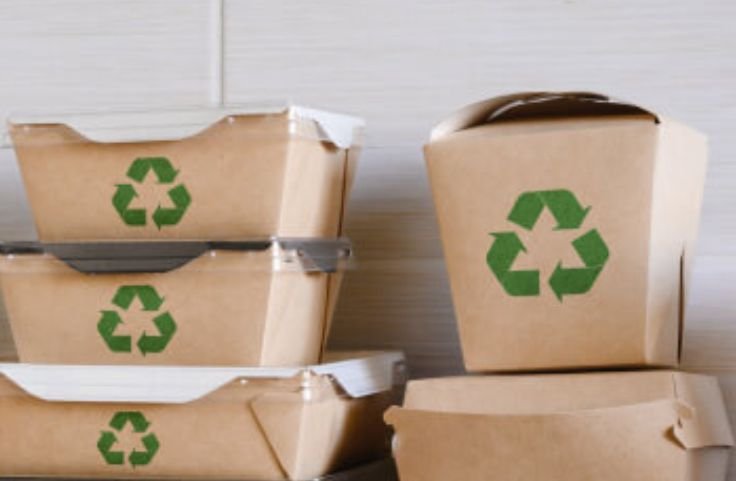The cassava packaging market is evolving fast, driven by rising demand, export needs, and innovative materials. Get insights into key trends, growth areas, and what’s shaping the future.
You’re starting to notice more talk about cassava in the packaging world, and for good reason.
As demand for sustainable packaging grows, the cassava crop is stepping into the spotlight.
If you work in food processing, retail, export, or even local distribution, you’ve probably seen how buyers are now asking questions about eco-friendly packaging options.
Cassava-based packaging is gaining attention not just for being biodegradable but for meeting market expectations without sacrificing quality.
You might be sourcing for production, or selling to eco-aware consumers, understanding what’s happening in the cassava packaging market gives you a clear edge.
This shift is not slowing down. From lightweight films to tough carry bags, cassava is showing up in places that once belonged to plastics.
If you’re part of the cassava value chain, this trend matters, and knowing what drives it helps you stay ready for the future.
Table of Contents
- Main Points
- What is the Cassava Packaging Market?
- Why the Cassava Packaging Market is Growing Fast
- Key Products in the Cassava Packaging Market
- Regional Market Analysis
- Challenges Facing the Cassava Packaging Market
- Trends Influencing the Future of Cassava Packaging
- Opportunities for Growth
- What You Need to Know Moving Forward
- Frequently Asked Questions
- Conclusion
Main Points
- The cassava packaging market grows fast due to demand for eco-friendly materials, export growth, and ongoing innovations boosting quality and sustainability.
- Cassava packaging supports food, retail, agriculture, and consumer goods sectors with biodegradable alternatives, reducing plastic waste and meeting environmental regulations.
- Asia Pacific leads cassava production and exports; West Africa and North America grow with government backing and rising consumer interest in green packaging.
- Supply chain issues, plastic competition, infrastructure gaps, and varied regulations challenge cassava packaging growth, requiring smart strategies and strong partnerships to succeed.
What is the Cassava Packaging Market?
The cassava packaging market is the global industry focused on producing and selling packaging materials made from manioc starch.
These materials are biodegradable and used as alternatives to plastic.
The market includes items like cassava-based bags, wraps, films, and containers. It serves sectors such as food and beverage, agriculture, retail, and consumer goods.
The market is growing due to increasing demand for eco-friendly packaging, stricter environmental laws, and the need to reduce plastic waste.
Businesses and manufacturers are investing in cassava packaging to meet sustainability goals and appeal to environmentally aware customers.
Related: Cassava Bags, Shaping the Face of Packaging
Why the Cassava Packaging Market is Growing Fast
If you’re keeping an eye on sustainable trends, the cassava packaging market is one area you can’t afford to ignore.
It’s growing fast, and here’s why.
Rising Plastic Bans: A Push Toward Eco Packaging
You’ve probably seen more places phasing out single-use plastics.
These bans are pushing businesses like yours to rethink how products are packaged.
Cassava-based packaging is stepping in as a smart choice. It breaks down naturally, creates less waste, and helps meet environmental standards.
If your business is aiming to stay compliant and cut plastic use, cassava packaging gives you a clear path to do that while keeping your customers happy.
Consumer Demand for Sustainable Products
Your buyers are watching what goes into every product, including the packaging.
More shoppers are choosing brands that care about the planet.
Cassava packaging gives you an edge because it tells people you’re paying attention to what matters.
It aligns your brand with responsible practices and can boost trust, loyalty, and sales.
As this trend grows, businesses that make the shift early are set to benefit more.
Business Responsibility and Sustainability Goals
If your company has sustainability goals, cassava packaging helps you meet them without overhauling your operations.
It fits smoothly into existing supply chains and supports green branding.
By cutting back on plastic and using renewable materials, you show leadership and responsibility.
Investors, partners, and consumers all take note when a brand makes smart, forward-thinking moves, and cassava packaging is one of them.
Innovation and Better Packaging Performance
You may wonder if cassava packaging holds up under pressure. Thanks to improved tech and better processing, it does.
Cassava-based materials are now stronger, more flexible, and suitable for many uses, from food wraps to cosmetic pouches.
As these innovations continue, cassava packaging is becoming a reliable, high-performing solution.
It helps you keep quality high while making an eco-friendly switch that supports long-term growth.
Related Posts
How to Package Cassava Products for Quality
Is Cassava a Good Cash Crop in the U.S. Market?
Guide to Cassava Flour Business
Business Plan for Cassava Production, Processing, and Profit
Cassava Entrepreneurship – Everything to Know
Key Products in the Cassava Packaging Market
If you’re thinking about making your packaging more eco-friendly, cassava-based products give you plenty of smart options.
These top choices are shaping the market fast.
Cassava Bags: Biodegradable Options for Everyday Use
You’ve seen grocery bags, trash bags, and even takeout bags piling up in landfills.
Cassava-based bags help you avoid that. Made from cassava starch, they break down naturally without leaving behind harmful waste.
They’re strong enough for daily use, easy to source, and meet growing environmental expectations.
Whether you’re in retail, food service, or distribution, these bags can help your business stand out as responsible and forward-thinking.
Cassava Films and Wraps: Eco Alternatives for Food and Retail
If you package food or sensitive items, cassava-based films and wraps give you a safer, greener solution.
These biodegradable wraps help keep products fresh by sealing out moisture and air.
They work well in delis, bakeries, produce aisles, and retail packaging.
With customers paying more attention to what touches their food, switching to cassava film can give your brand a better image and boost consumer confidence.
Cassava Pouches and Containers: Safe Storage for Food and Liquids
You need packaging that holds up and keeps food fresh. Cassava-based pouches and containers do both.
They’re used for snacks, sauces, juices, and other perishables.
Because they come from renewable sources and break down easily, you meet green packaging goals without sacrificing performance.
If your business deals with consumables, switching to cassava containers helps you meet food safety standards while reducing your plastic footprint.
Real-World Applications: From Stores to Delivery
You don’t have to guess if cassava packaging fits your business; it already does.
Restaurants use cassava bags for takeout. Retail stores offer cassava shopping bags at checkout.
Online shops use cassava films to wrap and protect products during delivery.
These real-use cases show how cassava packaging can replace plastic across industries.
As demand grows, adding it to your packaging line keeps your business competitive and future-ready.
Regional Market Analysis
Cassava packaging is growing worldwide, but different regions are moving at different speeds.
Where you live or do business could shape how you tap into this trend.
Asia Pacific: Leading in Production and Export
If you’re looking at where cassava packaging is booming, Asia Pacific tops the list. Countries like Thailand, Indonesia, and Vietnam lead in cassava farming and starch processing.
Thailand exports large volumes of cassava starch, which feeds the growing packaging market across the region.
With strong agricultural systems and rising demand for eco-friendly solutions, this region is setting the pace.
If you’re sourcing raw materials or planning to enter this space, Asia Pacific is worth watching.
West Africa: Emerging Players with Big Potential
You might want to keep an eye on Nigeria and Ghana. These countries are stepping up with investments in cassava-based packaging.
Local farming is strong, and governments are backing green innovation.
As plastic waste becomes a bigger issue, West Africa is using its cassava supply to build sustainable solutions.
If your business operates in or trades with this region, cassava packaging could offer new market and partnership opportunities.
North America: Rising Demand for Eco Packaging
In North America, more people are asking for packaging that does less harm to the planet.
You’ll see cassava products gaining ground, especially with companies that want to lower their carbon footprint.
The growth is steady, not explosive, but it’s backed by real demand.
If your business needs to meet strict sustainability goals, cassava-based packaging can help you keep up with changing rules and customer values.
Europe: Sustainability Driving Adoption
Europe is also leaning into biodegradable packaging, with cassava starch getting attention as a clean material.
Strict environmental policies and eco-conscious shoppers are creating room for new ideas.
While cassava is not widely grown here, demand for imported cassava-based packaging is growing.
If you’re exporting or working with European partners, this is a market where clean materials like cassava can help you stay competitive and meet regulations.
Challenges Facing the Cassava Packaging Market
If you’re involved with cassava packaging, you know the path forward has hurdles to clear.
Understanding these challenges helps you plan smarter and stay ahead.
Supply Chain Issues: Managing a Perishable Raw Material
Cassava is perishable and needs careful handling. Delays, yield changes, and transport damage can disrupt supply.
You’ll need strong logistics and good supplier relationships to keep production steady.
Competition with Traditional Plastic Packaging
Plastic remains popular due to its low cost and reliability.
Switching to cassava packaging may require new equipment and training, making adoption slower.
You must highlight the eco benefits to gain support.
Infrastructure and Regulatory Challenges
Many regions lack facilities and networks for cassava packaging production. Varying biodegradable packaging rules add complexity.
Understanding regulations and partnering locally can help you move past these obstacles.
Trends Influencing the Future of Cassava Packaging
If you want to stay ahead in packaging, knowing the trends shaping cassava packaging can help you make better decisions and grow your business sustainably.
Advances in Technology: Better Materials for Your Packaging Needs
You’ll find that new technologies are improving cassava packaging every day.
These advances make materials stronger, more durable, and better at protecting food and other products.
With improved barrier properties, cassava packaging now competes more closely with plastic.
If you want packaging that keeps products fresh while reducing waste, these innovations make cassava a practical choice for your business.
Growing Consumer Eco-Consciousness: Meeting Demand for Green Options
Your customers are asking for eco-friendly packaging more than ever.
Cassava packaging meets that demand because it breaks down naturally and comes from a renewable source.
When you choose cassava, you’re sending a clear message that your brand cares about the environment.
This helps build trust and can set you apart in markets where shoppers expect greener options.
Regulatory Changes: Adapting to New Rules and Standards
New laws around the world are pushing companies to cut down on plastic waste.
If you want to stay compliant, switching to cassava packaging is a smart move.
Governments favor materials that biodegrade and reduce landfill waste.
Keeping up with these rules means less risk of fines and better access to markets that require eco-friendly packaging.
Circular Economy: Designing Packaging That Works with Nature
The circular economy focuses on reducing waste and reusing materials.
Cassava packaging fits well here because it decomposes quickly in organic waste streams.
Using this packaging helps your business close the loop by turning waste into natural compost.
This approach appeals to customers and supports your sustainability goals while helping protect the planet.
Opportunities for Growth
If you want to grow your business in packaging, the cassava market offers several chances to expand by meeting the rising need for eco-friendly and sustainable solutions.
Bioplastics and Biodegradable Materials: Meeting Rising Demand
You’ll find big opportunities in bioplastics made from cassava starch.
As more industries shift to greener choices, using renewable and biodegradable packaging helps you attract customers who care about the environment.
Getting ahead in this area puts you in a strong position to lead in sustainable packaging and reach consumers looking for clean alternatives.
Strategic Partnerships: Building Stronger Supply Chains
Working closely with cassava farmers, manufacturers, and retailers can boost your supply chain and spark new ideas.
Partnerships like these help reduce waste and improve resource use.
When you collaborate, you create packaging solutions that better fit what customers want and meet sustainability targets.
Teaming up with others can give you a competitive edge in the market.
Investment in Research and Development: Improving Packaging Quality
Investing in new technology and product design helps you make cassava packaging stronger and easier to use.
Better quality and lower costs open doors to more customers.
If you focus on innovation, you can offer packaging that stands out for both performance and eco-friendliness.
This can help your business grow and attract partners interested in green solutions.
Expanding into New Markets: Tapping Underrepresented Regions
Growth also comes from reaching new markets, especially in developing countries where awareness of sustainability is rising.
Understanding local needs and habits helps you succeed there.
Partnering with brands focused on green practices creates win-win situations.
Expanding your reach this way helps you build a stronger presence while supporting global eco-friendly packaging efforts.
What You Need to Know Moving Forward
If you want to stay relevant in packaging, understanding where the cassava market is headed will help you make smarter choices and keep up with changing demands.
Environmental Benefits: Why Cassava Packaging Matters
You should know that cassava packaging comes from a renewable source and breaks down naturally.
Choosing cassava helps reduce plastic waste and supports global efforts to lower fossil fuel use.
This makes your packaging greener and aligns your business with growing sustainability goals that customers and regulators care about.
Business Advantage: Staying Ahead with Eco-Friendly Packaging
Adopting cassava packaging early gives you a leg up on competitors.
It helps you follow new rules on plastics while attracting customers who want eco-friendly products.
When you use sustainable materials, you build trust and loyalty, which can grow your market share and improve your brand’s reputation.
Consumer Choice: Supporting Sustainable Practices
Your customers want to make better choices, and cassava packaging makes it easier for them.
When they buy products with biodegradable packaging, they help cut plastic pollution and encourage more companies to go green.
This shift strengthens the circular economy and pushes the whole industry toward better environmental habits.
Policy and Innovation: Keeping Up with Industry Changes
Regulations are changing fast, so staying informed about new rules and technologies in cassava packaging is important.
Policymakers are supporting research to improve these materials, opening doors for more innovation.
Keeping up means you can adjust your strategies and take advantage of new opportunities as the market grows.
Frequently Asked Questions
What is cassava packaging?
Cassava packaging is made from starch derived from cassava roots. It offers biodegradable alternatives to plastics in bags, films, and containers for various industries.
Why is cassava packaging gaining popularity?
Its biodegradability and renewable source help reduce plastic pollution. It meets rising consumer demand and stricter regulations on single-use plastics worldwide.
Which industries use cassava packaging?
Food and beverage, retail, agriculture, and consumer goods industries use cassava packaging for eco-friendly solutions that maintain product freshness and reduce environmental impact.
What challenges affect cassava packaging growth?
Supply chain complexities, competition with plastic, lack of infrastructure, and varying regulations slow growth, requiring innovation and collaboration to overcome.
Conclusion
The cassava packaging market is evolving quickly as more businesses and consumers prioritize sustainability.
Growing demand for biodegradable materials, combined with export opportunities and regional production strengths, drives market expansion.
While challenges like supply chain management and competition with plastics remain, advances in technology and stronger partnerships offer ways forward.
By understanding regional differences and keeping up with changing regulations, you can position your business to benefit from this shift.
Whether you are in food processing, retail, or export, adopting cassava packaging can help you meet environmental goals, appeal to eco-conscious buyers, and stay competitive.
As the market moves toward circular economy practices, cassava packaging stands out as a promising solution for the future.

Chimeremeze Emeh is a writer and researcher passionate about Africa’s most transformative root crop—cassava. Through his work at cassavavaluechain.com, he explores the entire cassava industry, from cultivation and processing to its diverse applications in food, health, and industrial use.
He also writes for palmoilpalm.com, where he shares his extensive experience and deep-rooted knowledge of palm oil, covering red palm oil, palm kernel oil, and refined products. His work there reflects his lifelong connection to agriculture and his commitment to promoting sustainable value chains in Africa.
Driven by curiosity and purpose, Chimeremeze aims to shed light on how cassava continues to empower communities, strengthen food systems, and link traditional farming wisdom with modern innovation.

